The Center for Nanoscale Systems (CNS) Materials Characterization Core trains users on a variety of mechanical, thermal, chemical, and electrical analysis instrumentation in the SEC.
CNS trains users to independently operate the instrumentation with confidence. Assisted and remote service are also available.
Equipment Summary (more details below)
| Dynamic Mechanical Analysis | Surface Analysis | Chemical and Particle Analysis | Thermal Analysis |
| Dynamic Mechanical Analysis Mettler Toledo DMA 1 | Atomic Force Microscopy (AFM) JPK Nanowizard AFM | Horiba LabRam Soleil Raman Microscope | Thermogravimetric Analysis TA Instruments Discovery TGA 550. |
| Rheometry TA Instruments HR 20 Discovery Hybrid Rheometer | Bruker Optical Interferometric Profiler | DLS and Zeta Potential Malvern Zetasizer Pro | TA Instruments Discovery 250 Differential Scanning Calorimetry (DSC) |
| Bruker Nanoindenter | Electrical Characterization Signatone Probe Station | Thermo Scientific Nicolet iS-50 FTIR | |
| Magritek Spinsolve 80 Carbon NMR |
About Us
Physical size: 3,000 SF
Location: SEC LL2.226
The Material Characterization Core is a satellite of the Center for Nanoscale Systems (CNS), a shared-use core facility. The research equipment provided in the Materials Characterization Core includes tools for analyzing microstructure, optical, chemical, mechanical, and particle analyses. The Core includes the following instruments: AFM, DMA, electrophoretic light scattering instrument, impedance analyzer, FTIR, interferometer, nanoindenter, particle counter, probe station, Raman, rheometer, TGA, and more.
Onboarding Process
Once a researcher has registered as a CNS user and attended an instrument training, they will be granted independent access to the instrument. Assisted and remote service are also available.
1. Create an account. To use CNS facilities, researchers must enroll as CNS users: https://cns1.rc.fas.harvard.edu/become-cns-user
2. A list of upcoming trainings can be found here: https://cns1.rc.fas.harvard.edu/training-sign-up/. Trainings may also be scheduled by emailing colella@fas.harvard.edu.
CNS and Fees
More information about CNS, including the Materials Characterization Core, can be found at https://cns.fas.harvard.edu.
Rates, billing policy, and other information can be found at https://cns1.rc.fas.harvard.edu/user-info/
Meet the Team
Manager: Dr. Nicholas Colella
Dr. Colella has a Ph.D. in Polymer Science & Engineering and previously taught quantum mechanics and experimental physical chemistry in the Harvard Chemistry Department as a preceptor. His research publications have received over 1000 citations, and he is a six-time recipient of the Harvard University Derek Bok Center for Teaching and Learning Certificate of Excellence in Teaching.
CONTACT US
Manager: Dr. Nicholas Colella
email: colella@fas.harvard.edu
Onsite availability: 9-5 M-F
Equipment
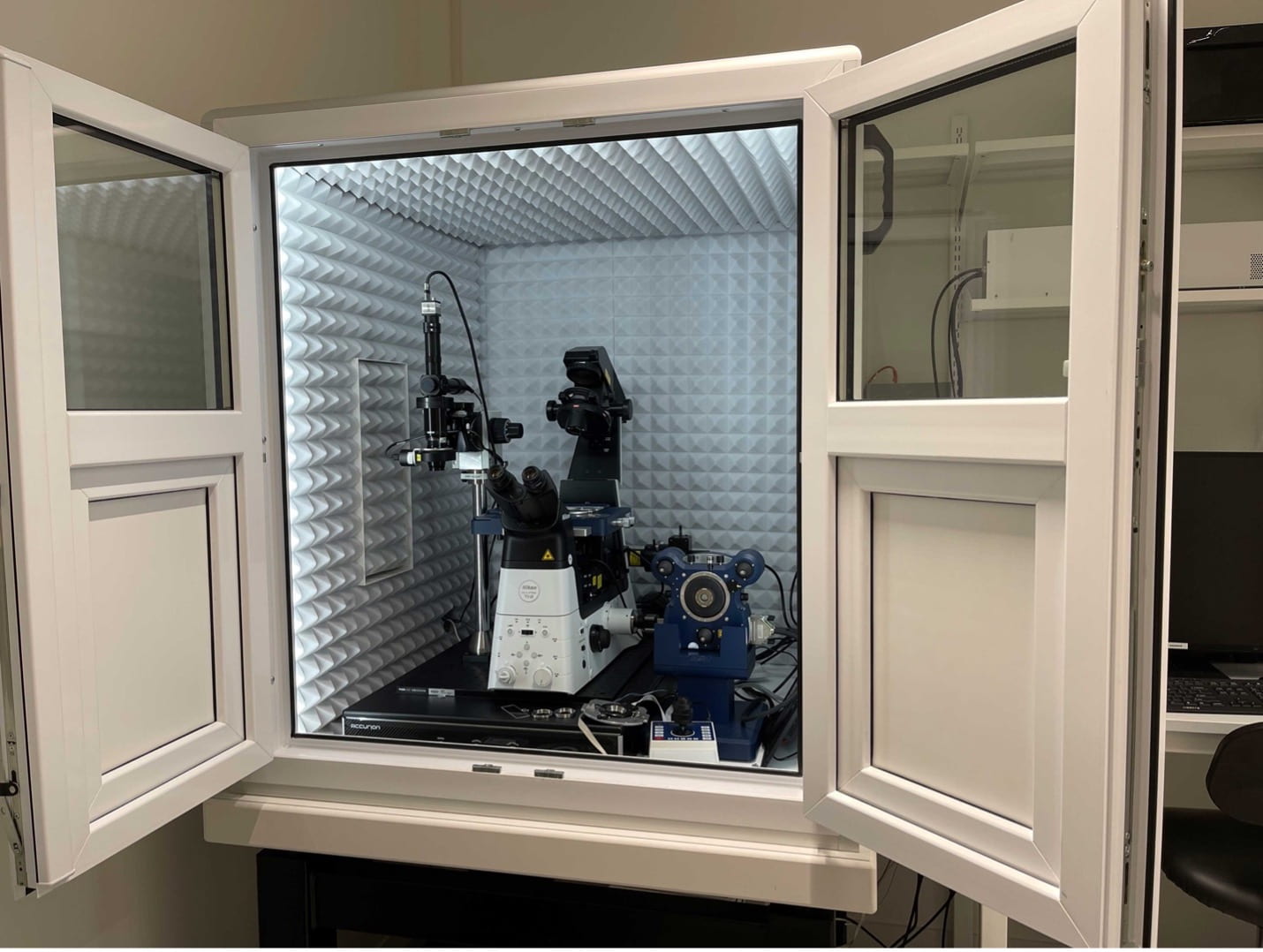
JPK Nanowizard Atomic Force Microscope (AFM)
Atomic Force Microscopy (AFM) can be used to determine the surface topography in air or liquids with atomic height resolution. It can be used to perform stiffness mapping with Quantitative Imaging force curves, in addition to “microrheology” on viscoelastic materials. An inverted optical microscope can align surface scans with fluorescent imaging. Heated stages are available for both solids and liquids. Up to 100 x 100 um lateral range and a maximum peak-to-valley height variation of 15 um.
Typical use cases include mapping the moduli of biological, polymeric, and other organic materials, with a modulus range of GPa to sub-kPa.
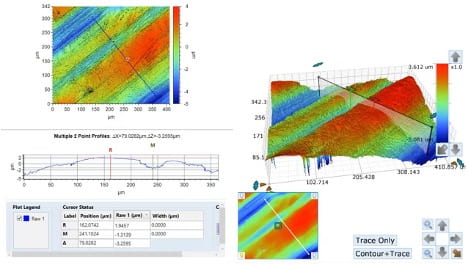
Bruker ContourX-500 Optical Profilometer
Optical profilometry can be used to quickly and easily measure surface topography over large areas. The interferometric optical profiler enables the collection of quantitative surface height profiles with nanometer Z and micron X-Y spatial resolution.
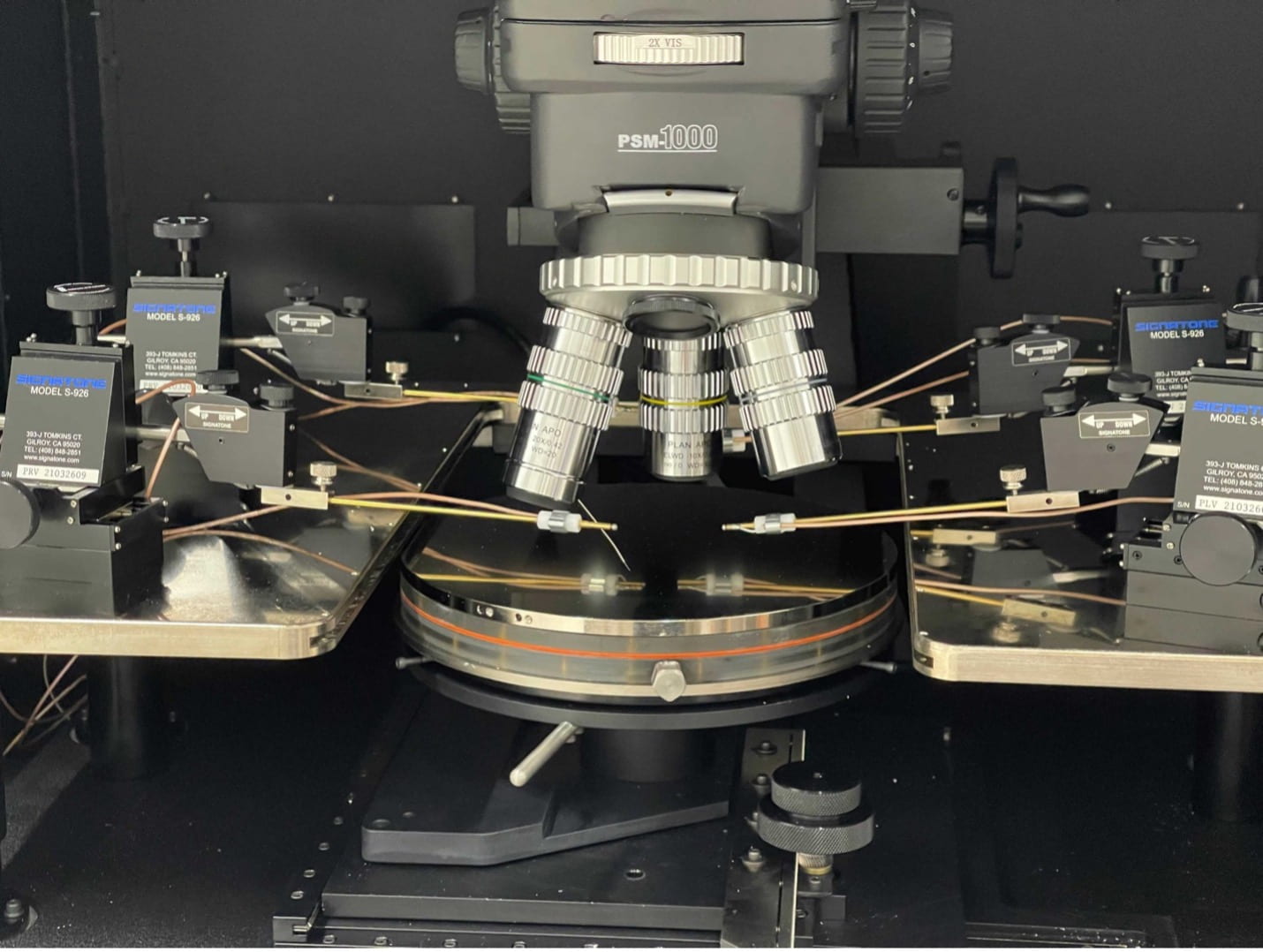
Signatone Probe Station with Keithley 4200A Semiconductor Parameter Analyzer
The probe station can be used to characterize the electrical properties of materials and devices, including transistors, capacitors, and resistors. Additionally, a solar simulator is available for the characterization of photovoltaics (solar cells).
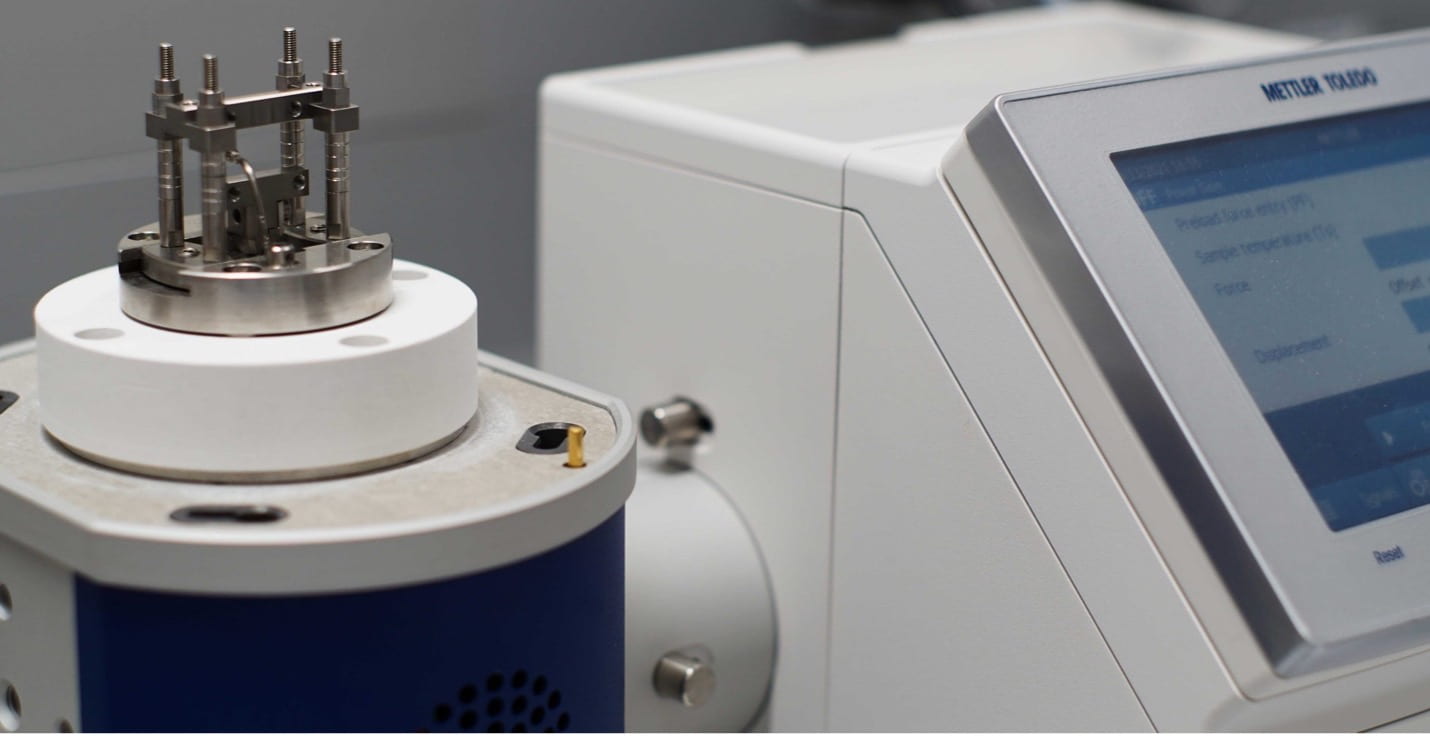
Mettler Toledo DMA 1
The Dynamic Mechanical Analyzer (DMA) can be used to determine the mechanical properties of viscoelastic materials such as polymers and other solids. It can be operated in bending, tension, shear and compression modes. Specimens can be studied over a wide range of temperatures (-190 °C to 600 °C) and frequencies (0.001 Hz to 300 Hz).
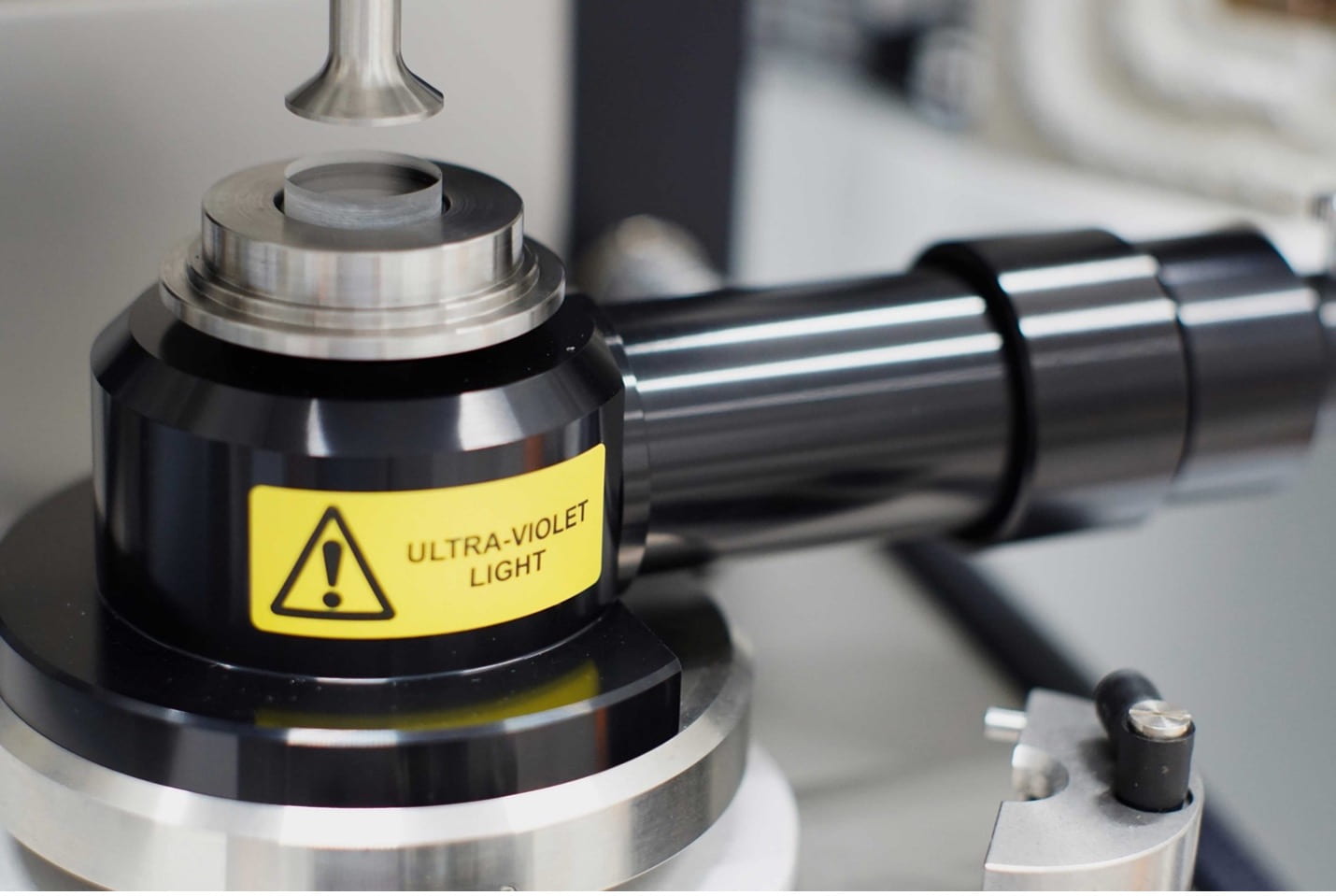
TA Instruments HR-20 Rheometer
Rheometry is used to evaluate the viscoelastic/rheological properties of solids and liquids. Typical parameters include storage modulus, loss modulus, and viscosity. Beyond analyzing materials over a wide range of temperatures, -160 to 600 C with the Environmental Test Chamber, an ultraviolet accessory is available to characterize UV curing or degradation, and the dielectric properties of materials can be analyzed with the LCR meter accessory. Additionally, a Double Wall Ring is available to perform interfacial rheology.
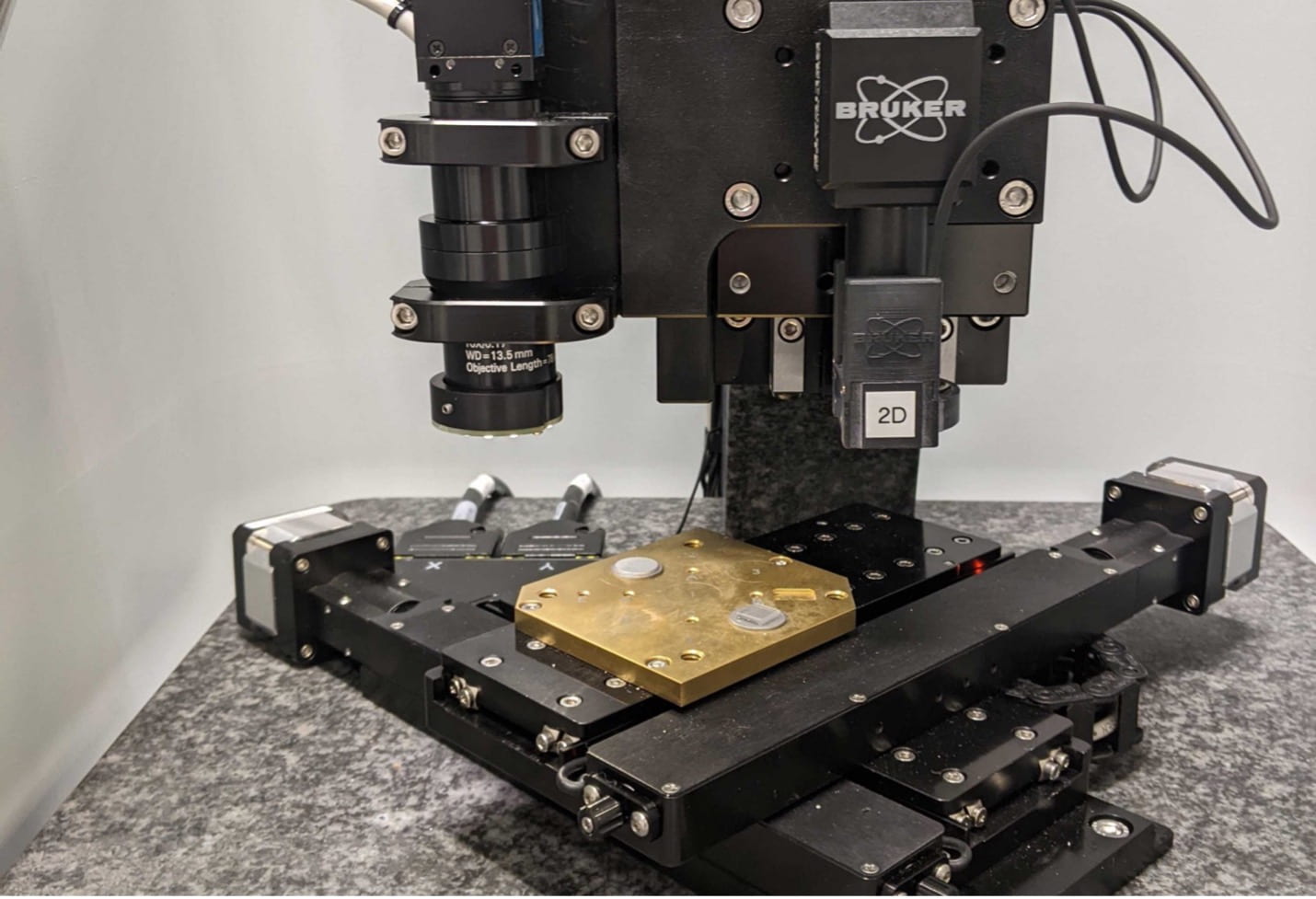
Bruker Hysitron TS 77 Nanoindenter
The nanoindenter can quickly and easily probe the modulus and hardness of materials with stiffness of 1 MPa or greater. This technique is also known as depth sensing indentation or instrumented indentation. It can perform dynamic analyses to determine viscoelastic properties.
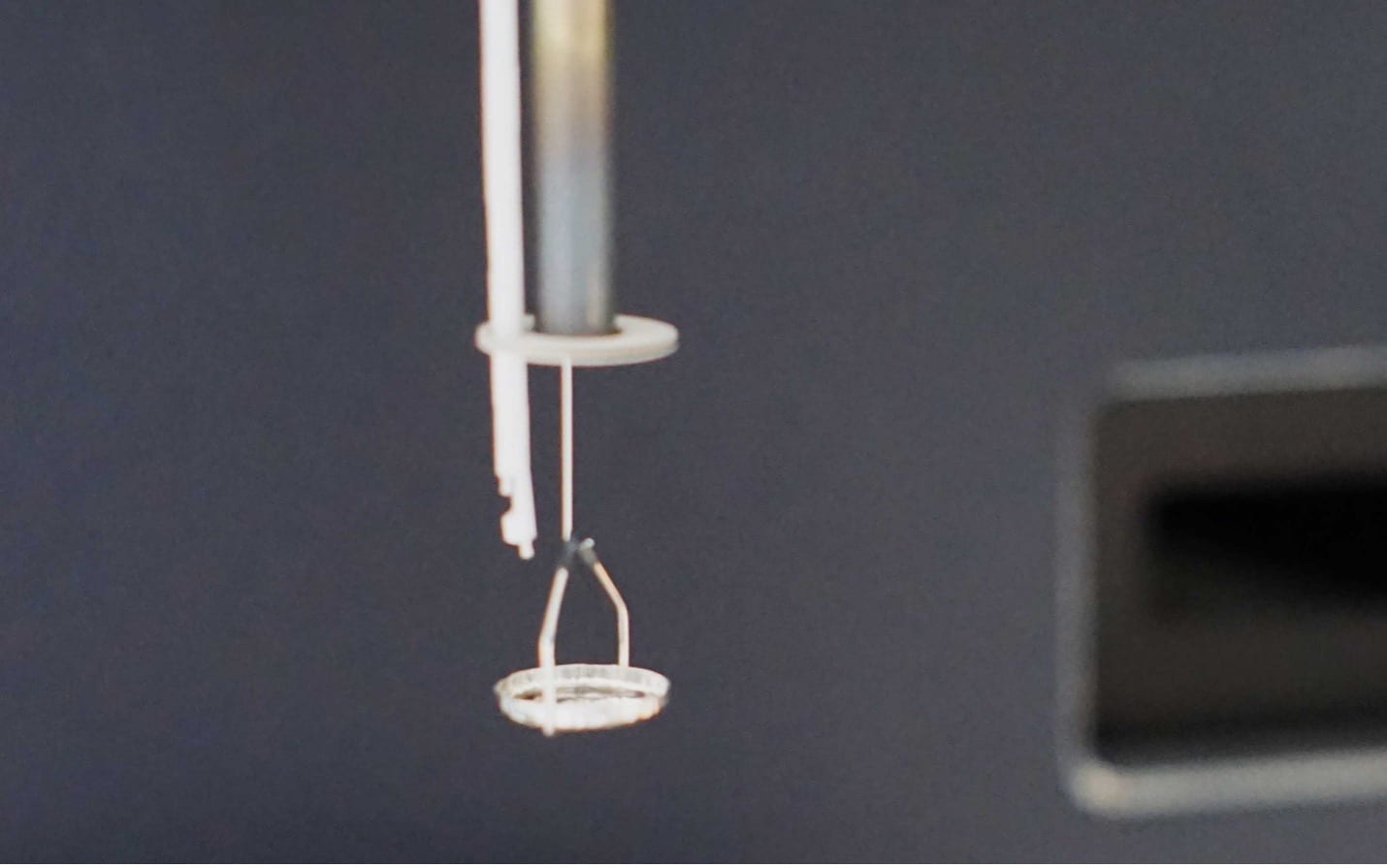
TA Instruments TGA 550
Thermogravimetric analysis (TGA) can quantify thermal decomposition under nitrogen or air, at temperatures of up to 1000 °C. It can be used to analyze gas phase decomposition products when used with our Fourier-transform infrared (FTIR) accessory. The system can determine precise compositions of organic/inorganic hybrid systems, or can be used to calculate the moisture content of hydrogels and other solids.
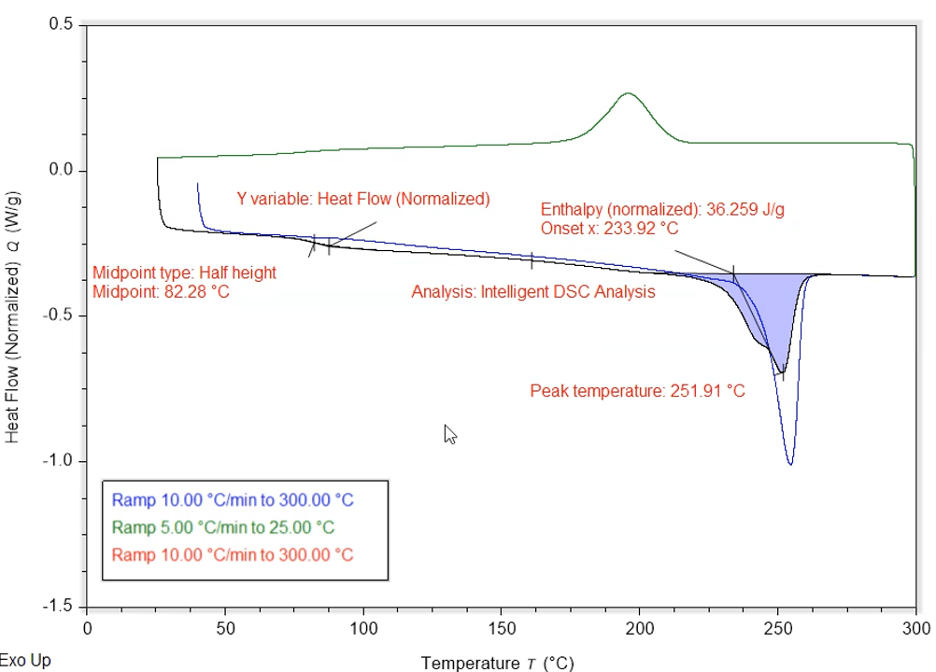
TA Instruments DSC 250
Differential Scanning Calorimetry (DSC) is used to quantify the melting, crystallization, and glass transitions of organic materials between -90 °C and 550 °C. Modulated DSC can be used to distinguish between kinetic and thermodynamic heatflows.
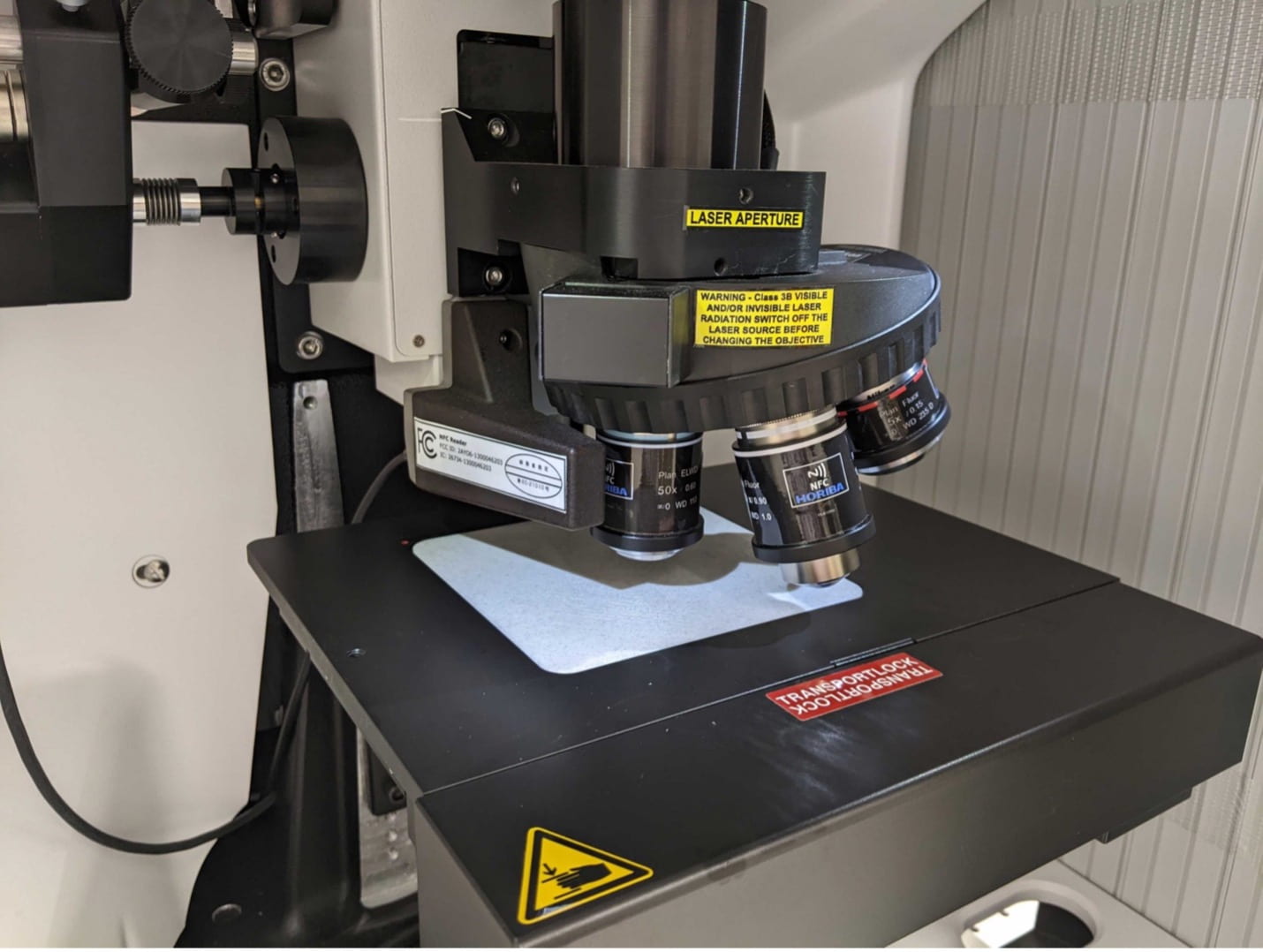
Horiba LabRAM Soleil Raman Microscope
Raman spectroscopy facilitates the study of vibrational and other low frequency optical modes in a specimen. When combined with a motorized stage, such systems can be used to gain chemical information with sub-micron spatial resolution. The Raman system at the SEC has 532 nm and 325 nm laser lines. Fluorescence/photoluminescence measurements are also available.
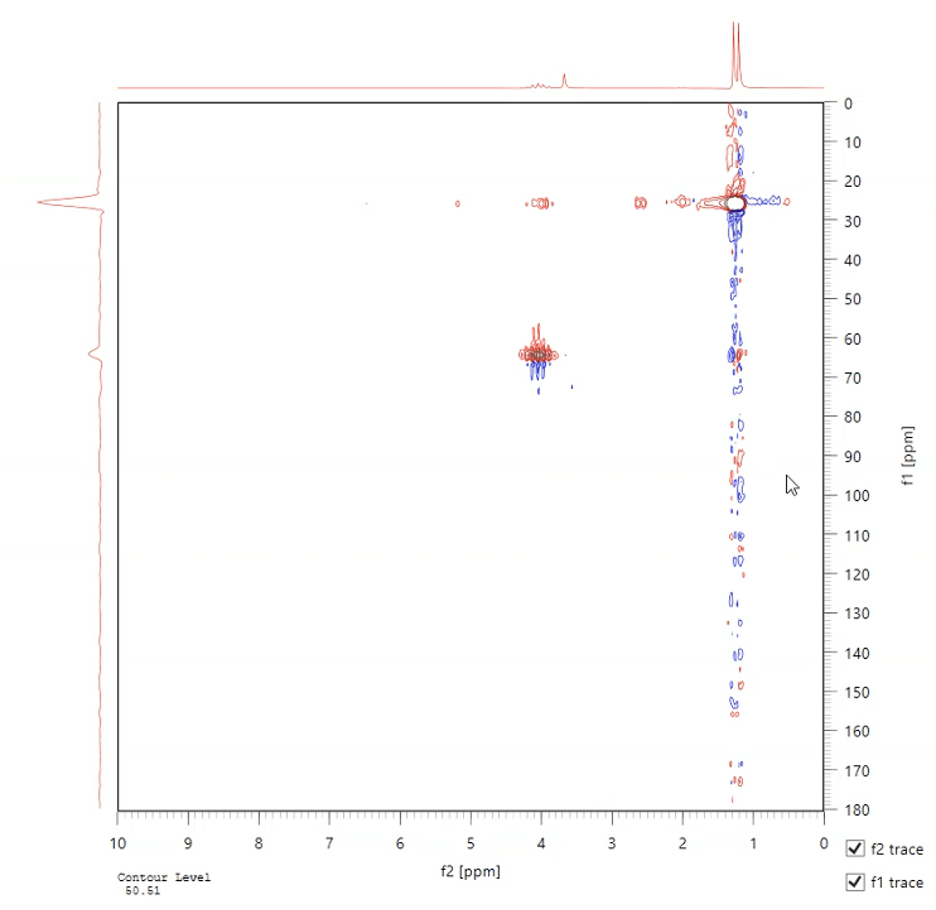
Magritek Spinsolve 80 NMR
Nuclear magnetic resonance (NMR) spectroscopy can be used to determine molecular composition. The benchtop system at the SEC can analyze H, C, and F atoms. Two-dimensional analysis modes include correlated spectroscopy (COSY), rotating frame Overhause effect spectroscopy (ROESY), heteronuclear multiple quantum coherence (HMQC) and heteronuclear single quantum coherence (HSQC) modes.
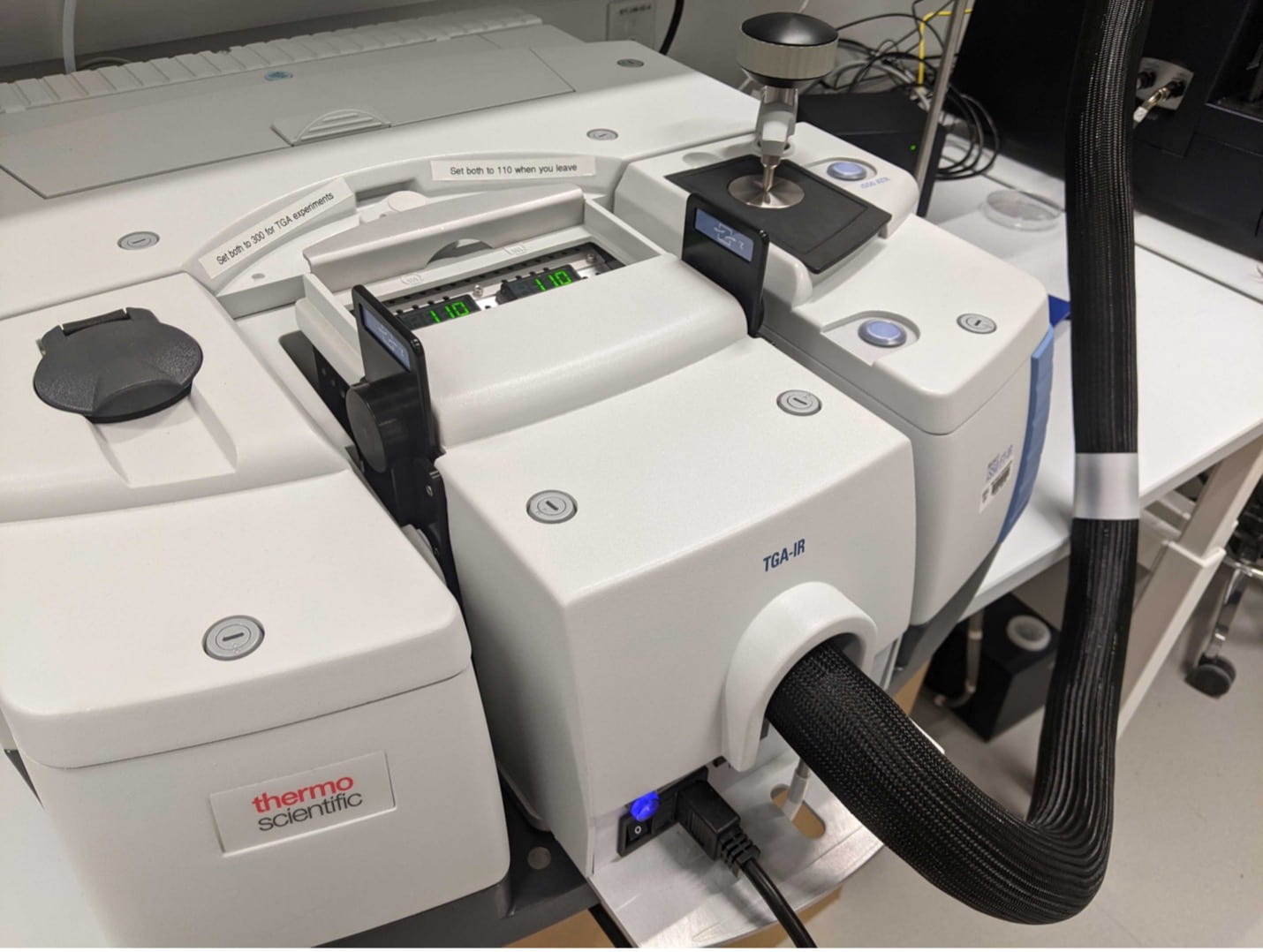
ThermoScientific Nicolet iS-50 FTIR
Fourier-transform infrared (FTIR) spectroscopy can be used to determine the molecular composition of specimens. The system at the SEC has a diamond ATR crystal for analysis of solids, powders, and liquids. A TGA-IR accessory is also available for analysis of the gases evolved during TGA experiments.
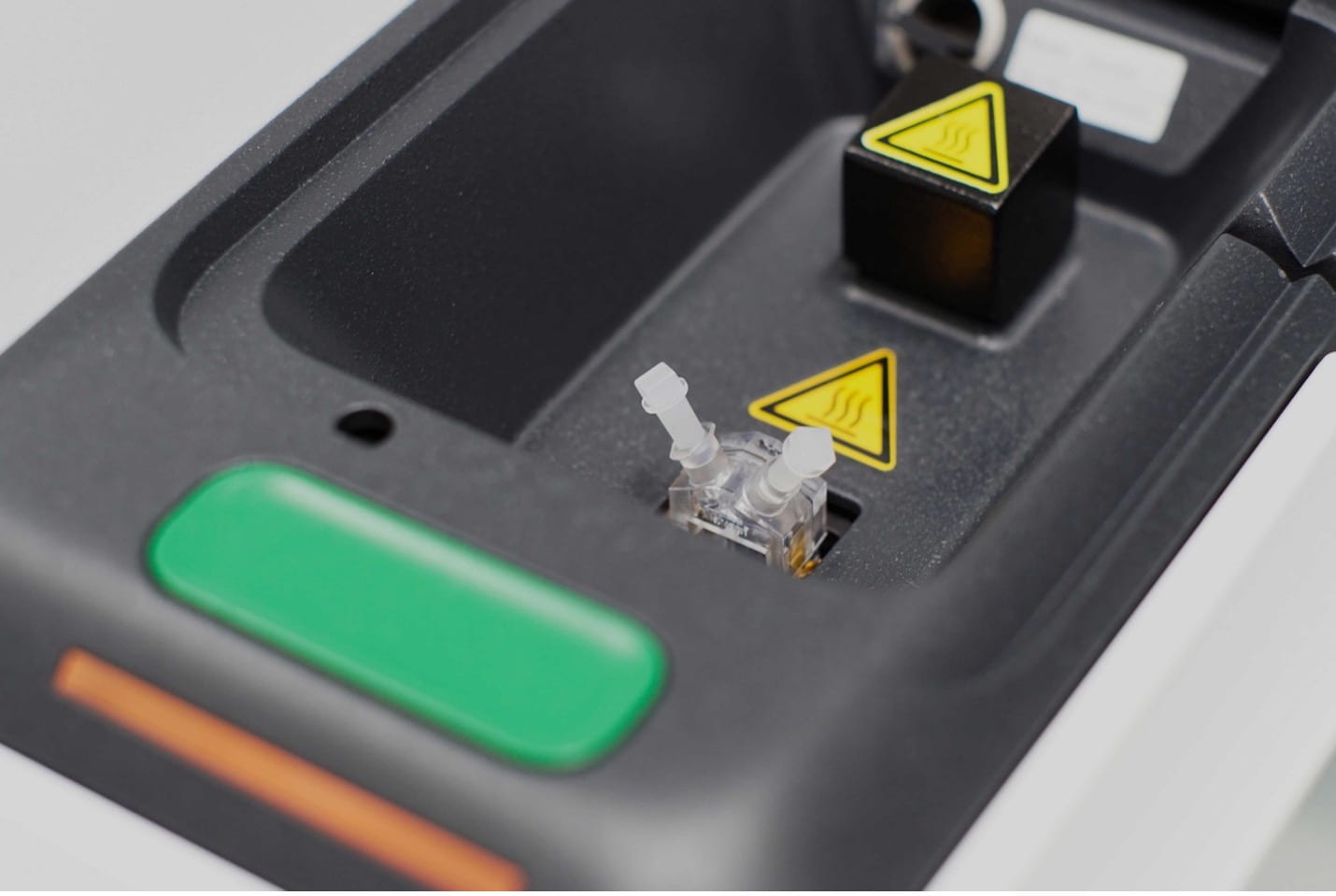
Malvern Zetasizer Pro
To analyze particles, whether metal, ceramic, organic, or biological, the Zetasizer is available to characterize particle size from 2 nm to 2 µm via dynamic light scattering (DLS), and evaluate the stability of suspensions by zeta potential determination.
Large (>2 um) particles are not suitable for the Zetasizer – please contact the Bauer Core for other characterization options.